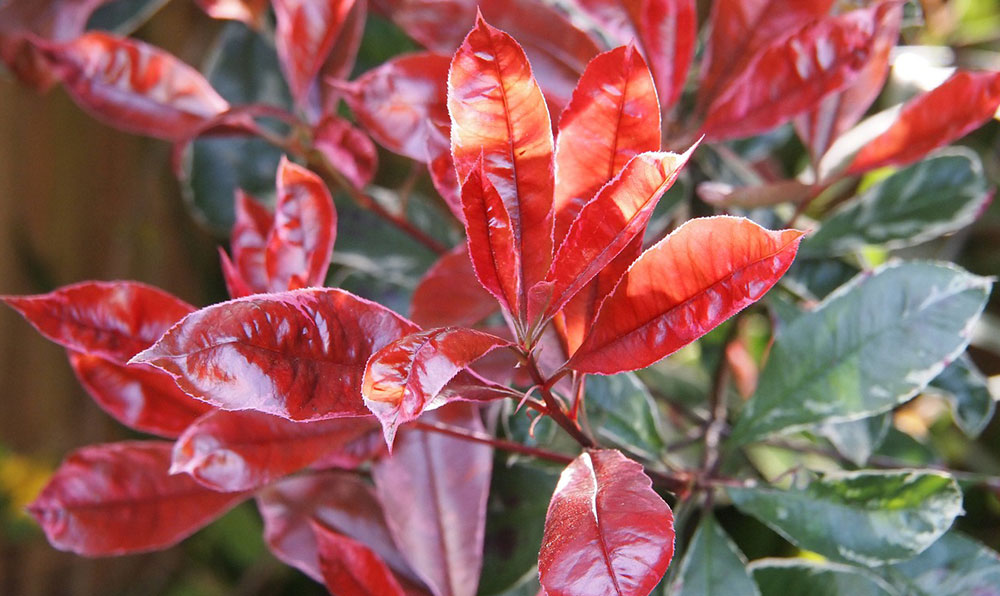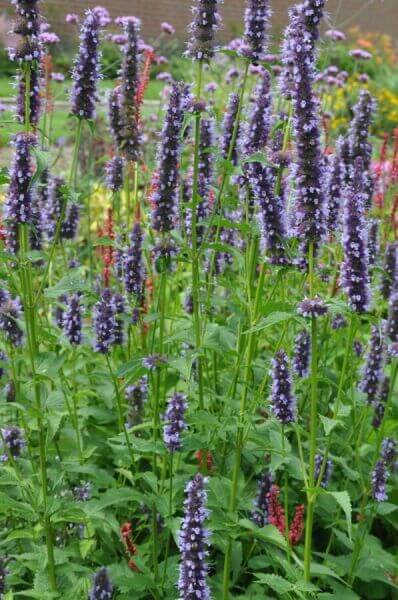Best Hedging Plants For Smooth Trimming
Best Hedging Plants For Smooth Trimming
Blog Article
Best Hedging Plants For Garden Privacy
Enhance your garden's allure with lavish hedge varieties such as Yew (Taxus), Thuja, Laurel, Photinia, and Bamboo, commemorated for their structural integrity and ecological benefits.
Yew and Thuja supply evergreen coverage and winter season durability, while Laurel uses fast development and broad, fragrant leaves.
Photinia adds seasonal beauty with its lively red foliage, and Bamboo provides a low-maintenance, serene ambiance.
These hedges improve air quality, lower noise, and create tranquil, private spaces.
Correct planting, spacing, and maintenance guarantee energetic development and environmental consistency.
Check out how these rich ranges can elevate your garden's beauty and well-being.
Secret Takeaways
Change Your Garden With Lush Hedge Ranges
- Select Yew for its dense, evergreen development and unrivaled longevity.
- Select Laurel for its quick growth and broad leaves, guaranteeing fast personal privacy.
- Pick Photinia for its lively seasonal foliage, which turns a striking dark red.
- Utilize Bamboo for a low-maintenance, winter-hardy hedge with aesthetic appeal.
- Space plants 2-3 per meter and prune regularly for ideal development and health.
Popular Hedge Plants
When transforming a garden with lavish hedge ranges, it's important to consider popular hedge plants such as Yew, Thuja, Laurel, and Photinia due to their distinct qualities and benefits.
Yew (Taxus) is highly esteemed for its longevity and dense, green growth, making it a prime option for sustaining landscapes.
Thuja is kept in mind for its evergreen foliage and robust winter season strength.
Photinia includes seasonal vibrancy with red leaves that darken in time, producing dynamic visual appeal.
Laurel offers rapid growth and fragrant, broad leaves, perfect for fast personal privacy.
Furthermore, Bamboo is an exceptional choice for atmosphere, offering a low-maintenance, winter-hardy option that enhances the garden's aesthetic with its elegant, swaying canes.
These selections accommodate a variety of horticultural requirements and choices.
Benefits of Garden Hedges
Garden hedges offer a wide range of benefits, making them an important addition to any landscape. These natural barriers are economical to implement and supply substantial wind defense, boosting air flow and contributing to sound decrease. The dense foliage of hedges like Thuja and Beech guarantees privacy by obstructing presence, producing a peaceful and secluded environment.
Hedges also play a crucial function in microclimate regulation, providing a steady environment that cultivates plant development and reduces temperature level fluctuations. Their complex leaf structures filter pollutants, enhancing air quality and contributing to a healthier garden ecosystem.
Furthermore, hedges master sound reduction, taking in and deflecting sound waves to lower ambient noise levels. This double functionality of offering both visual and acoustic privacy enhances the general serenity and visual appeal of any garden.
Planting and Upkeep Tips
For a successful hedge, careful preparation of the planting location is essential. Make sure the soil has proper pH and drain to support strong root advancement.
Space the plants properly for the chosen types. Water the hedge regularly during its initial development stage, adjusting as required with seasonal changes.
Implement a methodical bug control and disease avoidance method, using organic or chemical treatments when needed. Routinely check for aphids, termites, and fungal infections.
Apply mulch to retain moisture and suppress weeds. Seasonal pruning promotes dense growth and air flow, necessary for plant health.
Following these standards will assist you cultivate a vibrant, well-kept hedge that improves the appeal of your garden.
Spacing and Cutting Standards
Spacing and Cutting Guidelines
Proper spacing and cutting are crucial for cultivating healthy, visually appealing hedges. Sufficient spacing guarantees each plant gets enough nutrients, light, and airflow.
Follow these guidelines for optimal hedge maintenance:
- Spacing: Position hedge plants 2-3 plants per meter to encourage robust development.
- Pruning Strategies: Routine pruning is necessary for keeping wanted hedge height and shape. Cut new growth in summertime and cut back older wood during winter season.
- Seasonal Care: Change cutting schedules and methods according to seasonal requirements to make sure plant health.
- Hedge Height: Frequently display and trim to maintain the desired hedge height and attain consistent looks.
Sticking to these steps will guarantee your hedge grows, improving both the appeal and functionality of your garden.
Choosing the Right Hedge
Picking the Right Hedge
Choosing the appropriate hedge includes assessing factors such as mature height, foliage density, and environmental strength. Successful hedge plant choice needs understanding each types' growth attributes and site-specific versatility.
For example, Yew (Taxus) provides excellent longevity and thick development, while Thuja is noteworthy for its winter season strength. Additionally, considering upkeep requirements is essential; fast-growing types like Laurel or Privet demand routine trimming, whereas low-maintenance options like Bamboo or Ivy may be preferable for those looking for minimal maintenance.
Environmental elements such as soil type, light schedule, and wetness conditions need to likewise direct the selection process. This cautious method makes sure the picked hedges will grow, supplying both functional and visual benefits to the garden landscape.
Shipment and Planting Advice
To ensure your hedge plants thrive, they ought to be provided by specialized couriers and planted promptly upon arrival.
Follow these vital steps for successful planting:
- Soil Preparation: Enrich the soil with raw material to enhance drain and nutrient material.
- Planting Depth: Develop a trench two times the width and equivalent to the depth of the root ball.
- Watering Strategies: Water completely after planting, keeping the soil regularly wet but not saturated.
- Mulching: Apply a layer of mulch to maintain moisture and reduce weeds.
Client Assistance and Service
Offered the important function of prompt assistance in horticultural pursuits, our consumer assistance team is readily available six days a week through telephone, email, and social networks to use skilled suggestions and swiftly deal with any issues. Their commitment to fast action times ensures customer complete satisfaction by dealing with questions related to plant health, optimum planting techniques, and upkeep schedules.

Communication Method
-------------------
Email
Within 24 hours
This thorough assistance system, strengthened by a stellar 9.3/ 10 consumer score, highlights our commitment to boosting the gardening experience for each customer.
Often Asked Concerns
For How Long Does It Take for Hedge Plants to Establish?
Hedge plants generally need one to three years to end up being fully developed, with the exact duration varying by types and growing conditions.
Effective care during this important period is necessary for robust growth. Constant watering, alert weed control, and suitable fertilizer application are essential in promoting strong root development.
For example, fast-growing types like Laurel might establish faster, while slower-growing ranges such as Yew might take longer. Persistent upkeep speeds up the establishment process, leading to thick and healthy hedges.
What Are the very best Hedge Plants for Privacy?
The concern of the very best hedge plants for personal privacy involves evaluating evergreen and deciduous choices.
Evergreen hedges like Thuja, Laurel, and Cypress supply year-round protection, ensuring continuous privacy.
On the other hand, deciduous hedges such as Beech use seasonal personal privacy, shedding leaves in chillier months.
Key maintenance pointers for personal privacy hedges include routine trimming, fertilizing in spring, and proper spacing-- typically 2 to 3 plants per meter.
In addition, consistent watering and thorough weed elimination are crucial for promoting healthy, thick growth.
Can Hedge Plants Bring In Wildlife to My Garden?
Yes, hedge plants can draw in wildlife to your garden by providing vital benefits like shelter, food, and nesting websites, thus boosting local biodiversity. Yew, holly, and laurel are excellent for attracting birds, while ivy supports a range of pests.
Nevertheless, it is very important to note that there are some downsides, such as increased maintenance to manage pests and routine maintenance. Carefully choosing and preserving hedge varieties can help balance these benefits and drawbacks, eventually fostering a sustainable and dynamic ecosystem in your garden.
Are There Any Blooming Hedge Plants Available?
Yes, there are flowering hedge plants available that can enhance the charm of your garden.
For instance, Elaeagnus, likewise called Olive Willow, produces fragrant white flowers in the fall, including a touch of sophistication.
Photinia, another popular choice, showcases vibrant red leaves that develop into an abundant green, developing a dynamic visual effect throughout the seasons.
To ensure these plants flourish, it's necessary to practice correct pruning techniques and seasonal maintenance, such as trimming new growth in the summertime and cutting down in the winter season.
These procedures will assist keep the health and visual appeal of your blooming hedges.
How Do I Avoid Pests in My Hedge Plants?
To prevent pests in hedge plants, employ natural pest control methods and maintain proper hedge care. Introduce advantageous bugs like ladybugs, which take advantage of hazardous pests, to create a balanced ecosystem.
Routinely inspect your hedges for signs of infestation and quickly eliminate any affected parts to prevent the spread. Ensure the health of your hedges by using well balanced fertilizers and supplying sufficient water.
Use mulching to retain soil moisture and correct spacing to lower plant tension and promote robust growth. These practices collectively assist in decreasing insect concerns and keeping a healthy hedge.
Conclusion
In essence, selecting the right hedge varieties such as Yew, Thuja, and Laurel can more info change any garden into a relaxing sanctuary. These plants offer year-round greenery, boost visual appeal, and offer practical benefits like sound reduction and wind defense.
Appropriate planting techniques, precise spacing, constant watering, and seasonal trimming are essential for ideal growth.
Reliable shipment services and professional customer assistance ensure a smooth experience from purchase to planting, making it simpler than ever to raise your outdoor area.
Garden hedges offer a plethora of benefits, making them an important addition to any landscape. These natural barriers are affordable to carry out and offer substantial wind security, boosting air flow and contributing to sound reduction. The thick foliage of hedges like Thuja and Beech ensures personal privacy by blocking exposure, developing a serene and remote environment.

Pruning Techniques: Regular pruning is necessary for preserving desired hedge height and shape. Cut brand-new growth in summer and cut back older wood throughout winter.
Report this page